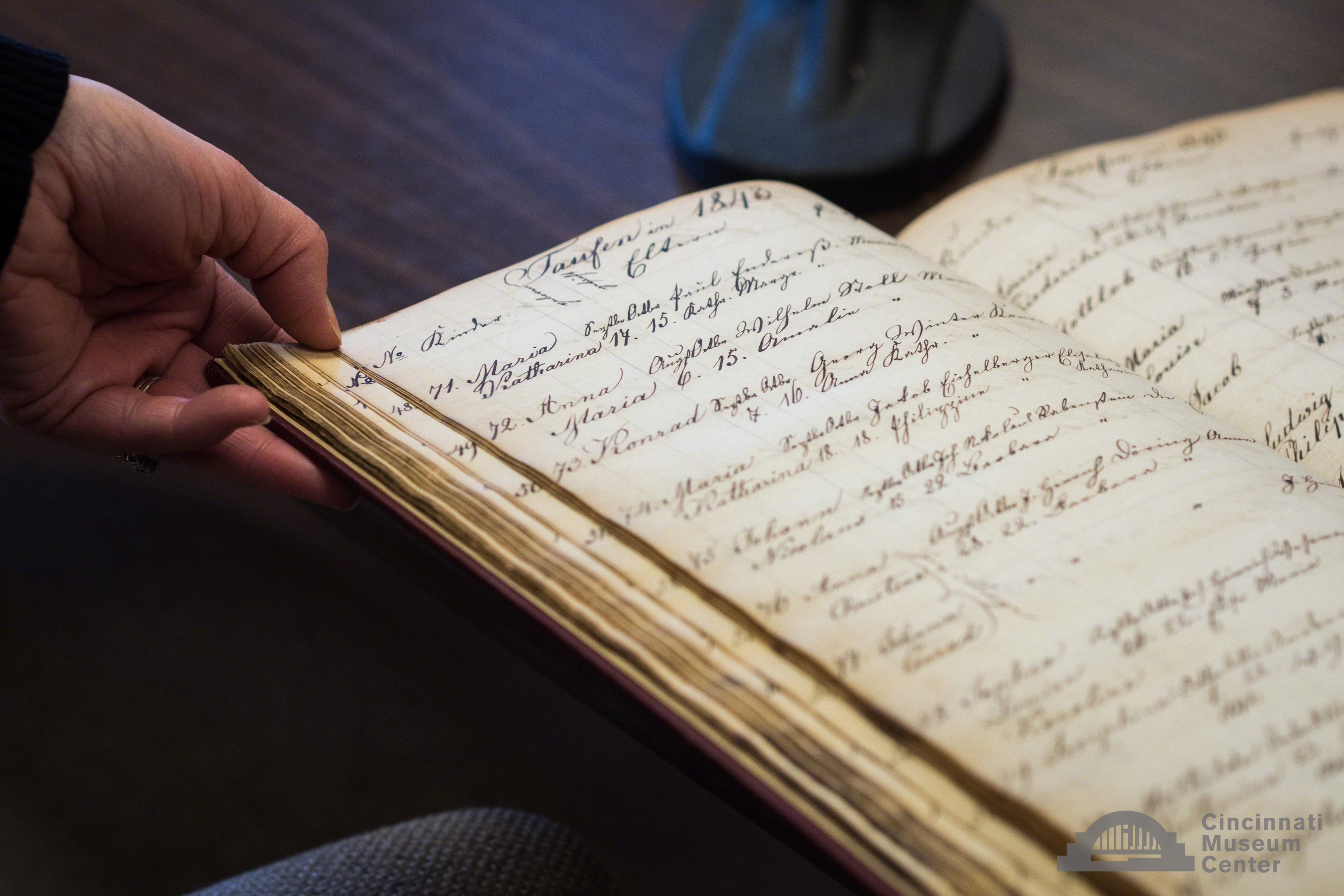
Manuscripts
The Manuscripts Collection contains approximately 11,300 collections, consisting of the papers of individuals and families and the records of organizations and businesses. The collections extend from the late 18th century to the early 21st century and document the cultural, social, political, military, scientific, religious, educational and economic development of the area. Early collection items include a pen and ink drawing of the plan of Fort Washington and a letter from the Lewis and Clark Corps of Discovery Expedition. Some notable collections from the 20th century are the scrapbooks chronicling efforts to reduce air pollution and save lives, the papers of the first African American mayor of Cincinnati and the records of the steamboat Delta Queen.
The Manuscript Collections are particularly strong in the areas of early Cincinnati history, the Civil War and Cincinnati clubs. Others subject areas with good representation include art, music, politics, banking, churches, charities, schools and education, transportation, machine tools and World Wars I and II. Prominent families from Cincinnati are well-represented in the collection with the papers of members of the Taft, Torrence, Hickenlooper, Lyford, Rowe, Gano, Harrison and Nast families, along with many others. Subjects with some coverage include African American politicians and civic leaders, like Marian Spencer, Theodore Berry, the Urban League and the Cincinnati NAACP, the meatpacking industry with the Cincinnati Union Stockyards Company records, and unique Cincinnati businesses, like Rookwood Pottery, the Cincinnati Stock Exchange and the John Robinson Circus.
The Manuscript Department also collects architectural drawings and records from major Cincinnati architects and architectural firms. The 170 architectural drawing collections contain an estimated 60,000 drawings of local businesses, landscapes, homes and churches.
History of the Collection
The manuscript collections are acquired mainly through donation. Department records show that manuscripts were being collected as early as 1855 by the Historical and Philosophical Society of Ohio, predecessor of the Cincinnati Historical Society and now part of Cincinnati Museum Center. The number of manuscript collections acquired apparently remained small through the 1920s. There was a clear increase in the rate of acquisition beginning in the 1930s, aided in part by the Bliss Fund, which was used to purchase collections from the 1930s through the 1960s. The rate of acquisition and the size of new collections continued to increase in the late twentieth century. The manuscript collections acquired before 1970 totaled an estimated 2,000 cubic feet, while those acquired since 1970 are an estimated 7,000 cubic feet in size. The CMC Archives was established in 1996 as the official repository for the records of enduring historic value created by Cincinnati Museum Center and its predecessor institutions, which include the Western Academy of Science, the Western Museum, the Historical and Philosophical Society of Ohio, the Cincinnati Historical Society, the Cincinnati Society of Natural History, the Cincinnati Museum of Natural History, the Museum Center Foundation and the Children's Museum of Cincinnati.
